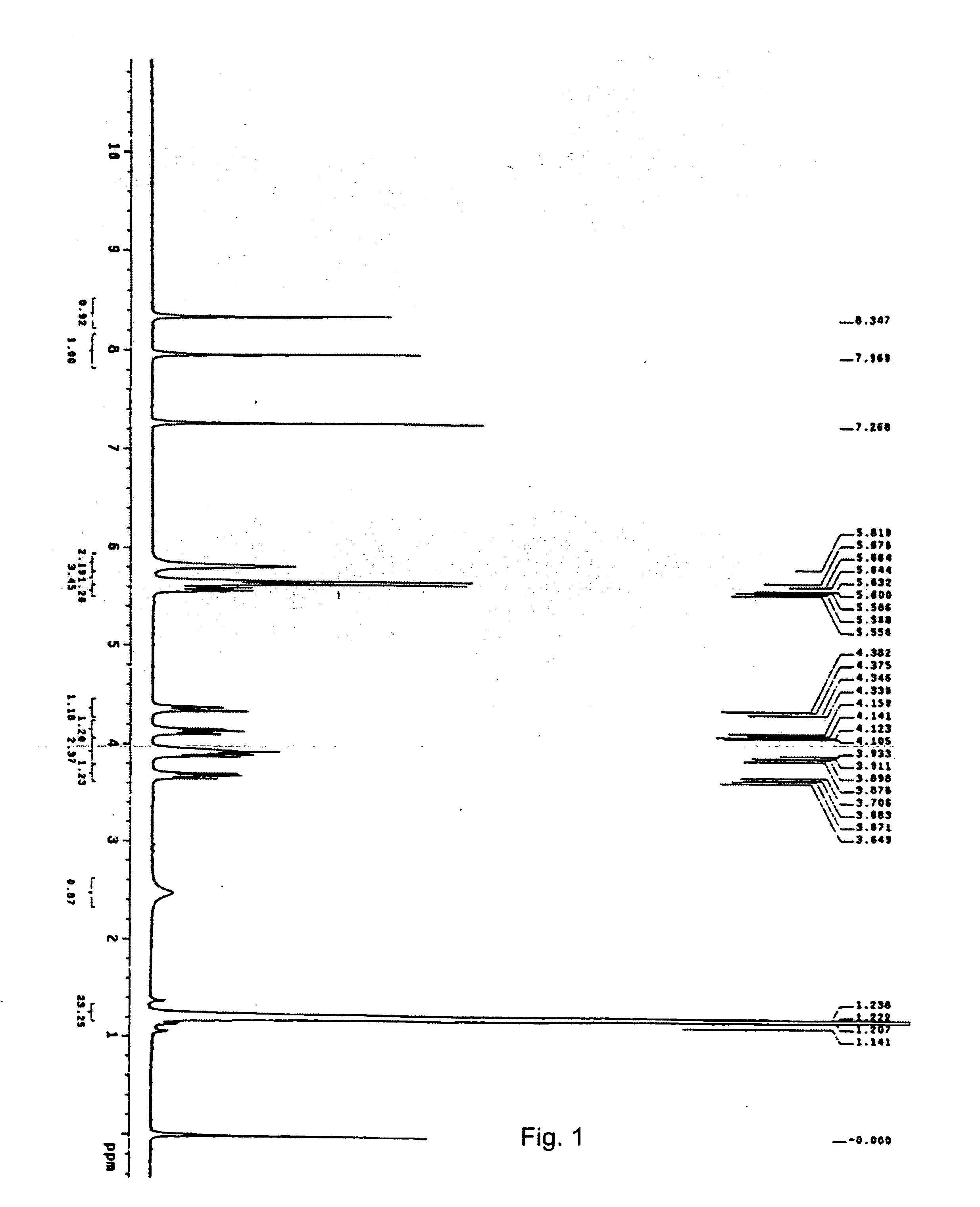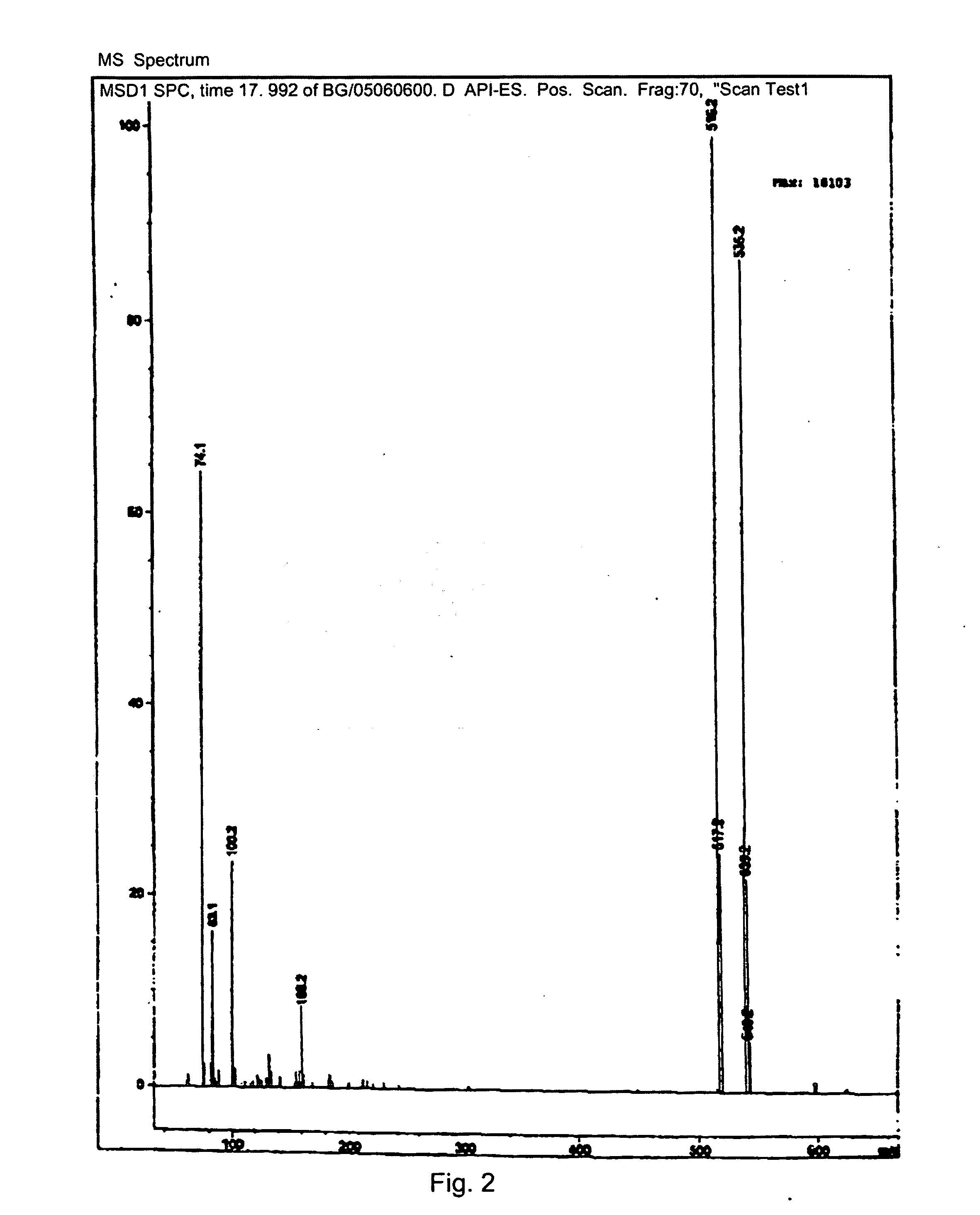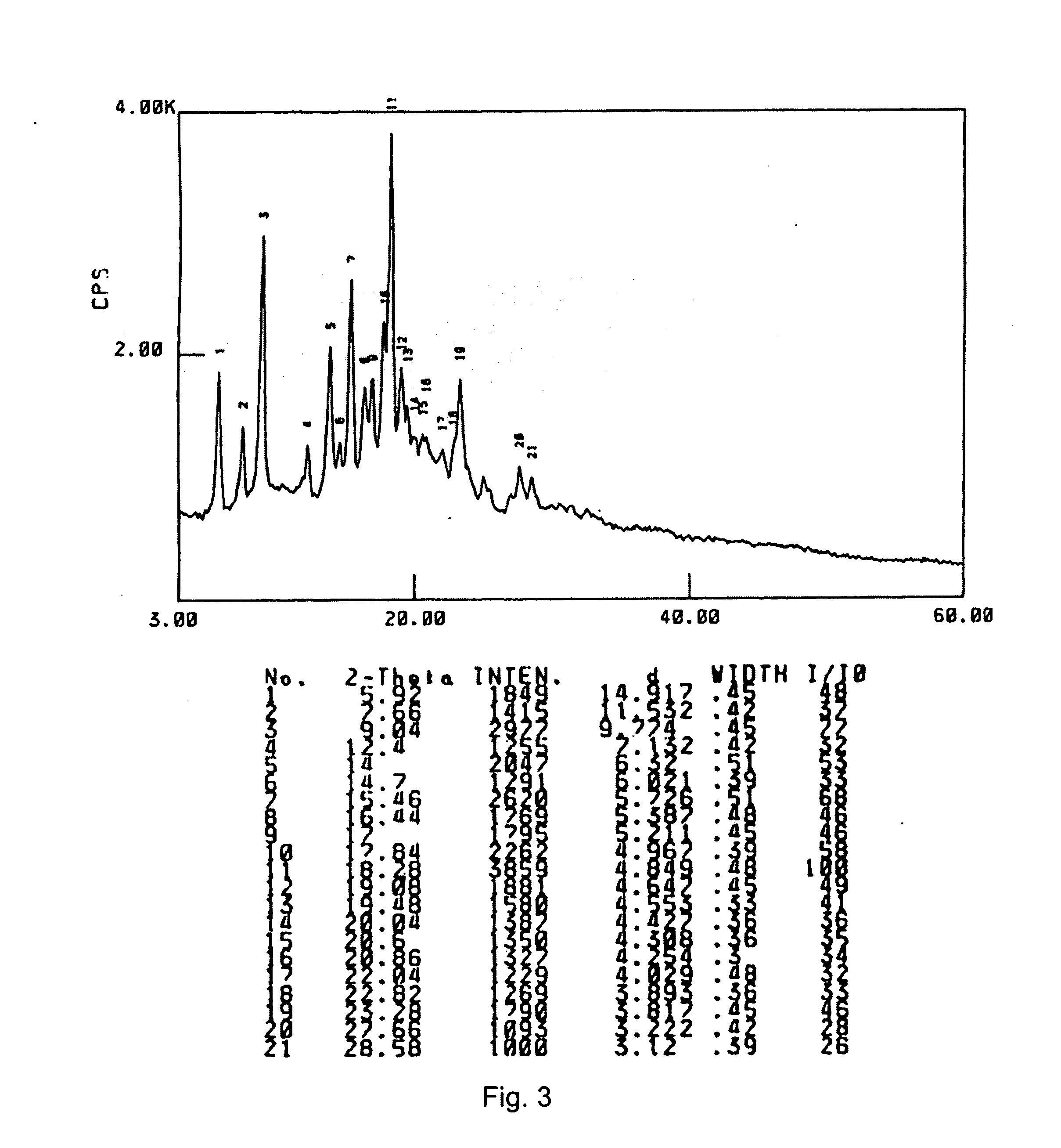Nucleotide Analogue Prodrug and the Preparation Thereof
a technology of nucleotide analogues and prodrugs, applied in the field of 92(r)bispivaloyloxymethoxyphosphinylmethoxypropyladenine, can solve the problems of heavy burden on liver and kidney of patients, inability to replicate hepatitis b virus (hbv) in human body, and higher incidence of adverse reactions and renal dysfunction. , to achieve the effect of better antiviral activity and safety profil
- Summary
- Abstract
- Description
- Claims
- Application Information
AI Technical Summary
Benefits of technology
Problems solved by technology
Method used
Image
Examples
example 1
Preparation of (R)-4-methyl-1,3-dioxolan-2-one
[0146]To the mixture of diethyl carbonate (380 ml, 15.1 mol) and 200 g of (R)-1,2-propanediol was added 40 ml of denatured ethanol (the solution of 9 g sodium methoxide dissolved in 50 ml of anhydrous ethanol), the resulting solution was heated to 80° C., then ethanol was distilled off slowly. The reaction process was monitored by TLC, after TLC showed that only trace amount of (R)-1,2-propanediol remained or (R)-1,2-propanediol was undetectable, ethanol was distilled under vacuum by water pump at 120° C. until no ethanol dropped out. The residue was distilled under vacuum to give the title compound as a colorless transparent liquid (111 g, 81.2% yield, purity 97% by GC)
example 2
Preparation of diethyl p-toluenesulfonyloxymethylphosphonate
[0147]Toluene (200 ml), diethyl phosphite (400 ml), paraformaldehyde (120 g) and triethylamine (50 ml) were mixed under an inert atmosphere (nitrogen) and heated to 70° C. for 2 hours, then further heated to reflux, the reaction completed when TLC showed that only trace amount of diethyl phosphite remained or diethyl phosphite was undetectable (developed with hexane:ethyl acetate=1:4), the resultant solution was cooled to below 10° C., p-toluenesulfonyl chloride (560 g) was then added followed by the slowly addition of triethylamine (560 ml) at about 5° C. while maintaining the temperature at no more than 10° C. After addition of triethylamine, the resulting mixture was warmed to room temperature and reacted for 8 hours until TLC showed only trace amount of p-toluenesulfonyl chloride remained or the p-toluenesulfonyl chloride became undetectable. The afforded solids were removed by filtration, washed with proper amount of t...
example 3
Preparation of (R)-9-[2-(diethoxyphosphinylmethoxy)propyl]adenine
[0148]Under an inert atmosphere (nitrogen), adenine (100 g), sodium hydroxide (1.2 g), (R)-4-methyl-1,3-dioxolan-2-one (84 g) and N,N-dimethylformamide (700 ml) were mixed together and stirred at 130° C. for 30 hours until TLC (10% methanol in CH2Cl2 (V / V)) showed the residual adenine was no more than 0.5%. After cooling to 25° C., LiH (8 g) was added, the resulting mixture was heated to 70° C. for 2 hours under nitrogen. Then cooled to room temperature, diethyl p-toluenesulfonyloxymethylphosphonate (300 g) was added. The resulting mixture was maintained at 60° C. until TLC showed the completion of reaction, concentrated under vacuum at the temperature of no more than 80° C. The residue was dissolved in water (500 ml), extracted with dichloromethane continuously, the resulting extracts were combined and concentrated under vacuum at the temperature of no more than 80° C. to give 200 g of viscous orange oil, with 65% pur...
PUM
| Property | Measurement | Unit |
|---|---|---|
| Temperature | aaaaa | aaaaa |
| Temperature | aaaaa | aaaaa |
| Percent by mass | aaaaa | aaaaa |
Abstract
Description
Claims
Application Information
 Login to View More
Login to View More - R&D
- Intellectual Property
- Life Sciences
- Materials
- Tech Scout
- Unparalleled Data Quality
- Higher Quality Content
- 60% Fewer Hallucinations
Browse by: Latest US Patents, China's latest patents, Technical Efficacy Thesaurus, Application Domain, Technology Topic, Popular Technical Reports.
© 2025 PatSnap. All rights reserved.Legal|Privacy policy|Modern Slavery Act Transparency Statement|Sitemap|About US| Contact US: help@patsnap.com



